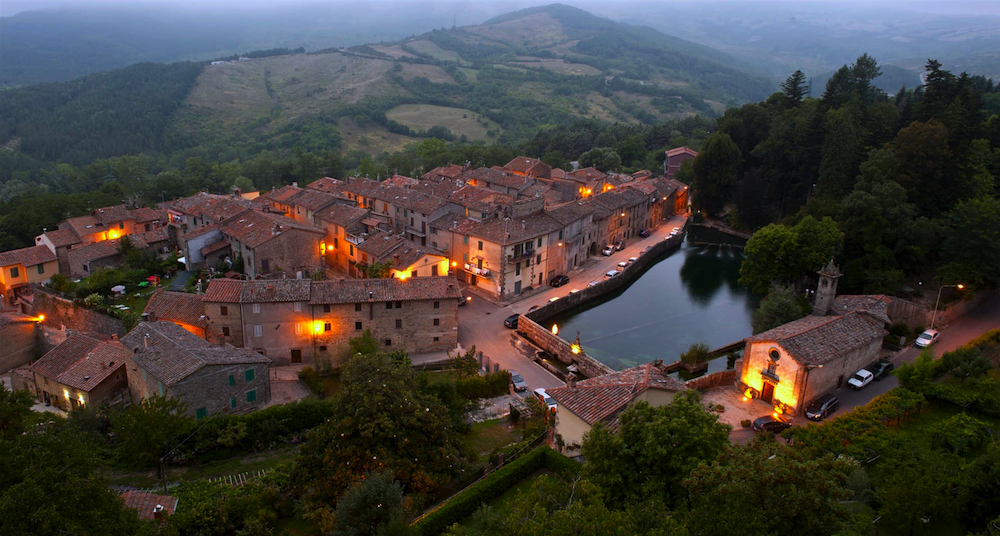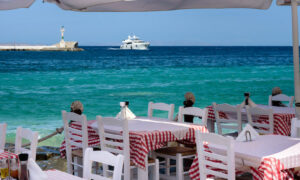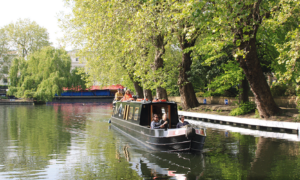(Editor’s note: This is Pt. 3 in a continuing series of posts about Carla Bastos’ efforts to start a new expat life in Italy. You can jump to Pt. 1 here and Pt. 2 here.)
In any major life change (such as permanently relocating to another country), there are psychological elements. One important accomplishment in my COVID-interrupted journey toward retirement in Italy was reluctantly accepting the fact that I might forget or miss something, or there might be some new rule that I couldn’t comply with. This is just reality.
Stuff happens beyond our control, so we have to simply do our best and then give ourselves a break. Getting comfortable with this notion helps to overcome fear and trepidation. That said, I proceeded to give myself no breaks at all, and pressed on in my relentless pursuit of life in Italia.
I’ve found a village that I believe I will love. For me, the appeal of Santa Fiora, population about 2,500, can be summed up in one word: quiet.
This must-have hovers near the top of my list, and a very traditional, slow-paced village like Santa Fiora may meet this requirement perfectly.
But, there’s so much more.
As part of the town’s “Smart Village” project designed to attract remote workers, Santa Fiora has been equipped with high-speed broadband, along with Internet cafes or “working stations.” And it is picturesque. Located on a hilltop about 120 kilometers southeast of Florence, Santa Fiora’s medieval piazza, frescoes and towers, not to mention the Peschiera reservoir and surrounding parks, are exactly what one might envision when dreaming of Tuscany.
Rounding out the allure is its proximity to Montepulciano, known for some of Italy’s best red wines, only about an hour away.
Work to be done
Being the sucker – I mean informed researcher – that I am, I wasted no time in applying for Santa Fiora’s Smart Village project. If accepted, the town would pay a portion of my rent for several months while I settled in. In their very gracious email response, the tourism bureau informed me that I must first secure a rental and then present my rental agreement and new address along with my application. (I was also assured that someone would be available to guide me in my search.)
This requirement likely serves both the project and the fledgling expat. They want to know you are serious, and you want to know what you’re getting into. Real estate and rentals abound online, and of course the photos are all delectable. As with anything being peddled on the internet, caveat emptor is the order of the day.
In that same vein, I thought it would make sense to choose a couple of back-up locales to visit during my house-hunting trip this November. One is Lucca, closer to Florence and practically next-door to Pisa. While most Tuscan villages sit on hilltops, Lucca sits on the Serchio River. It is yet another medieval town with a fascinating history—founded by the Etruscans, meeting place of Julius Caesar, birthplace of Puccini, and still-standing city walls whose architect was none other than da Vinci. Although the population is close to 90,000 with a tourist appeal that includes an annual Puccini Festival (thereby possibly robbing me of my much-needed tranquility), Lucca is still worth a visit.
Another town on my radar is Pistoia, in the same region, just as architecturally and culturally rich, much like Lucca but slightly less touristy. (We’ll see about that.) And, there’s an annual blues festival! Who knew?
Festivals, by the way, are a mainstay of Italian culture. From tourist hotspots to the smallest villages, from the reverent to the raucous, these longstanding traditions celebrate food, wine, religion, art, music and film, not to mention epic gladiator battles.
Housing
I’ve preliminarily scouted out rentals in each of these towns and their surrounding regions. In each case, rents are affordable, amenities available and necessities accessible. Even in the most remote villages, there is no shortage of neighborhood bars, family restaurants, outdoor markets and busses or trains to Florence, Rome, etc.
Several years ago, on a bus ride from Florence to Pisa, I remember watching the rolling hills go by and wondering what life there was really like. Could it be as idyllic as it seemed? Just a fleeting curiosity at the time. (This was long before my decision to retire in the region.)
In this search, as in all things, my mantra is, stay curious. Perhaps during my two-week stay in November I’ll find that Santa Fiora won’t be my final stop. But there are so many other gems to discover and, for a lifelong learner, the excitement is in the exploration.
Sometimes, when delving into exhaustive research, the skeptic in us looks for the bad as well as the good, at each turn wondering what’s the catch? This may well be the wise approach. But, in my ongoing investigation of the land I plan to call home, I’ve yet to find a catch. Negatives, sure, and certainly some things that don’t meet my criteria. Overall though, this journey has left me more in love with Italy than before. All that’s left now is the in-person
confirmation.

Next up: American travel to Italy: restrictions and requirements
About the author:
Carla Bastos is a freelance writer and former journalist and newspaper editor. Having lived in developing countries and covered wars and natural disasters, she has written extensively on a variety of related topics.
Her many years of world travels and humanitarian work continue to inform her writing, which can be found at carla-bastos.com.
See more here about Italy’s various programs to repopulate villages.
See more in Dispatches’ Italy archives here.
Carla Bastos is an expat writer living in Italy.















